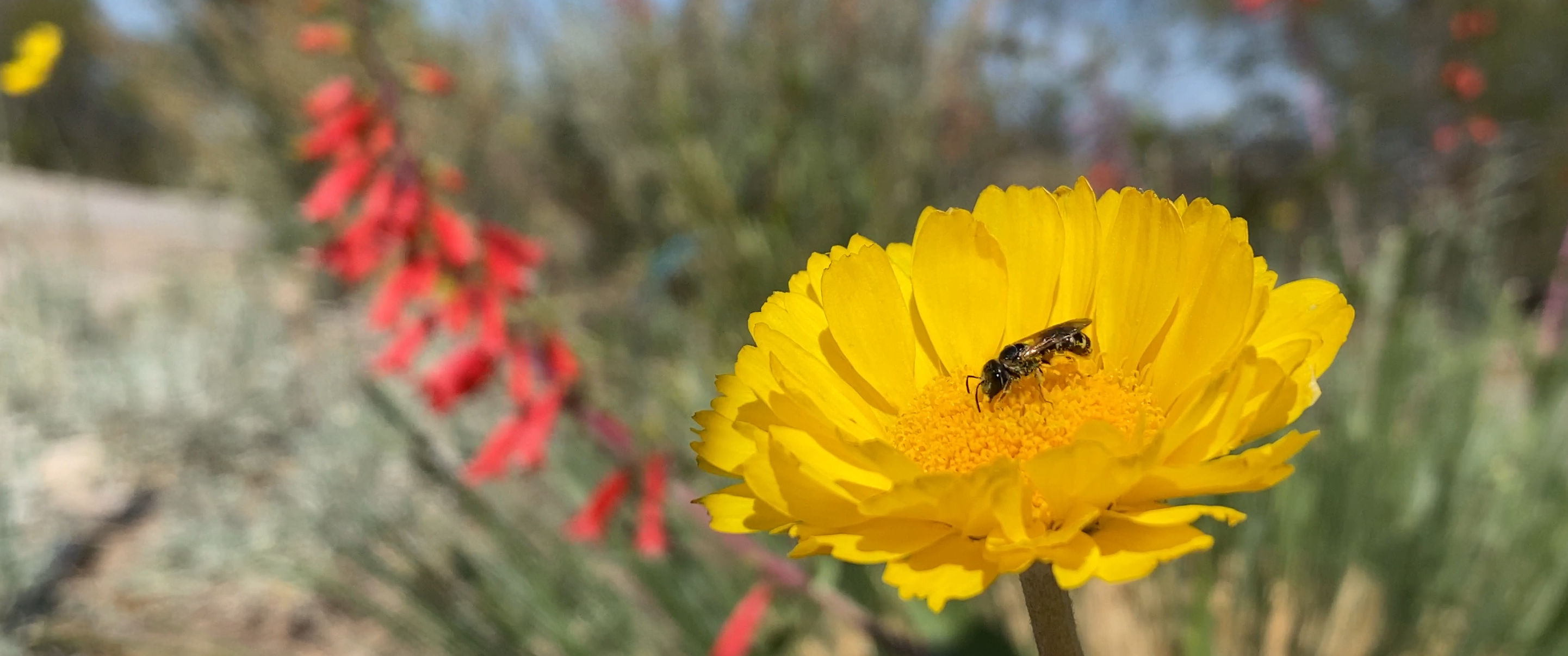 Four steps to helping pollinators in northern Nevada!
Four steps to helping pollinators in northern Nevada!
Step #1: Provide Abundant Pollinator Plants Across the Season
Planting a diversity of flowering plants provides the necessary pollinator food sources – pollen and nectar – for our native pollinators. This means striving to have several species of flowers blooming throughout the growing season.
Step #2: Plant Native (Whenever Possible)
Pollinators do best with native plants- that is, plants you can find out in your local landscapes. But it can be hard to know where to buy plants native to our corner of the Great Basin! So we have a crowd-sourced native plant list here.
If you have trouble finding native plants or want some other options, non-native plants in the mint family are also great choices for pollinators. Some of our favorites are catmint, lavender, and oregano. Make sure you ask your local nursery if your new plants were treated with any pesticides!
Step #3: Protect from Pesticides
Work to limit or eliminate your use of pesticides. Many pesticides can harm non-target insects that visit flowers for pollen or nectar. Some chemicals, called neonicotinoids, are especially toxic, can be found throughout the entire plant, and can remain in plants for years after they are applied. Visit the Xerces Society for more information on reducing pesticide use in homes and in the plants you buy from nurseries.
Step #4: “Bee” an advocate!
Advocate for pollinator friendly practices in our community, support the planting of native plants across our region and educate others about the importance of reducing pesticide use.
Other regional plant lists and resources:
Xerces Society Monarch Nectar Plants: Great Basin
Nevada Bee Identification Guide
Some of our partners who support this work:
Truckee Meadows Parks Foundation Rosewood Nature Study Area and Pollinator Garden
The University of Nevada, Reno, Museum of Natural History and Biggest Little Pollinator Garden


